Various parasites can live in humans. Not only multicellular and protozoa, but also viruses, bacteria, fungi. They are parasites at the expense of the human body. Harmful microorganisms can live not only in the gut, but also in muscles, blood, etc. With parasites, you need to start the fight as early as possible. Otherwise, complications are inevitable.

Parasitic varieties
There are many parasitic organisms that grow rapidly in the human body. Everything has special features.
Roundworms
Round worms or nematodes include about 1000 subspecies in their group. The most famous representatives are cream worms, Trichinella, toxocara, mine worms, nekators, and even ringworms. They enter the body through the mouth or skin. The main representative of the ringworm is explained in the table.
| Parasite | Description |
| Pinworms | This is a round worm that does not exceed 2-12 mm in length. Females are usually larger. This representation of parasites in the lower part of the intestine and large intestine. Adult females lay their eggs in the perianal area. Often, such representatives are present in children. The egg falls into the patient's hand while scratching the anus, which is itchy in the presence of such parasites. Itching is one of the first symptoms. |
| Trichinella | Trichinella is a nematode. Pests enter the body along with poorly processed meat. After they enter the body, complete intoxication will begin. In further cases, parasites can be fatal in humans. |
| Toksokar | These parasites often live on animals, including cattle. Young children are particularly vulnerable to toxocariosis. Parasites multiply very quickly, so treatment should be started immediately. |
| Hookworms | It is believed that every 4 people on the planet are carriers of this parasite. An adult can stay in the host body for 8 years. With proper and timely treatment, 95% of 100 patients can be cured of mine worms. Parasites enter the body along with contaminated soil. |
| Nekator | These representatives are small. Its length reaches 2 cm. Female mites lay up to 10 thousand eggs per day. Parasitic larvae enter the external environment along with feces. |
| Ascaris | Round worms can grow up to 35 cm. First, the parasite develops in the small intestine, and then spreads throughout the body. In order for an individual to become sexually mature, it is necessary to re-enter the body. |
Once the ringworm enters the human body, the process of development of pathological symptoms begins. The intestinal wall becomes inflamed and, for this reason, the function of the digestive system is disrupted. Parasites in the body are a serious threat. They absorb some of the nutrients.
Tape worms
A tapeworm or cestode found in the body causes a cestode. Adults are only found in the gut. Larvae are able to spread throughout the body. A person can be infected with the following tapeworm:
- Wide band. This is the longest helminth in the world. He is able to grow up to 15-17 meters. Widespread tapeworms cause great danger to the human body. Ulcers form on the attachment site.
- Bull tape worms. This is another major parasite that has a negative impact on human health. It is located most often in the small intestine. Infection occurs while eating contaminated meat that is less thermally processed.
- Pig tapeworm. Tapeworms can grow up to several meters. Pests can be carried by wild and domestic pigs.
- Echinococcus. Eggs enter the environment along with feces. Infections often occur when personal hygiene is not adhered to.
- Alveococcus. The parasite grows to 2. 2 mm long. Infection occurs through contaminated food with contaminated feces.
Pathology is mainly indicated by disorders of the gastrointestinal tract. Nerve activity abnormalities appear. A person's well-being is always deteriorating.
Fluke Worms
Flukes are flatworms. These are some of the most dangerous representatives. Almost all the parasitic flux of the owner's body. Only at a certain stage of development do they change ownership.
Host changes can eliminate the possibility of overpopulation in the host body. The most common flux representatives include:
- Siberian coincidence. Infection occurs while eating fish that has undergone inadequate heat treatment. In the mass of human feces, these mite eggs are contained. The parasite grows to 13 mm long. The body is almost completely transparent.
- Disadvantages. Parasites that are capable of infecting animals and humans. An adult grows a maximum of 8 cm. Infection may be caused by the use of dirty plants, of which flux is already in its intermediate form. There is also the risk of contamination through water.
- Shistosoma. If left untreated, schistosomas can cause the patient to die suddenly. For humans, only 6 of these parasites are harmful. Microorganisms can be located in the blood vessels, bladder. Infections often occur while swimming in freshwater.
- Clonorhis. People working in public catering are prone to infections. Clonorchis is most common in men over 35 years of age. They are at risk. Parasite eggs are excreted in feces.
Often, parasites enter the body when eating raw or undercooked fish. Another option is the presence of poorly washed vegetables and fruits in the diet.
Trematoda
This is a type of flatworm. Their main specialty is the presence of a cup sucker. Trematodes include:
- Opisthorchiasis. The cause of infection is raw or undercooked fish. Symptoms are not specific, so it is difficult to diagnose the disease. The results are often unfavorable.
- Fascioliasis. When infected, the liver and bile system are damaged. A characteristic sign of human infection is a sudden increase in body temperature to 39-40 degrees.
- Dikrokeliosis. Helminthiasis, the causative agent is lanceolate flance. If pathology, liver and gallbladder are also damaged.
This parasite is widespread throughout the world and poses a serious threat to livestock and humans.
Protozoa
The simplest parasite is a single-celled pest. Some delegates are the oldest population on Earth. Parasites manage to adapt to new conditions and reproduce due to their modest structure. The pest can live on the skin and even in the human body.
Movement of unicellular organisms can be done with the help of cilia, flagella, pseudopods. These types of parasites include:
- Flags. They have an oval or pear-shaped body. The main difference is the presence of flagella. Their number can be 1-8. The parasite sucks food all over the body. Infections can occur through insect bites, violations of personal hygiene rules, and even sharp sexual activity.
- Sporoviks. They are able to live in various human organs. Nutrition, respiration, release of waste products are carried out by the entire surface of the pest body.
- Infusorium. These are ciliary or sucking parasites. They live in fresh, ground waters.
- Terms Code. Parasites consist of a single cell. Some species of sarcode can live in human teeth if hygiene is not enough.
Single-celled organisms can cause a number of dangerous diseases, including malaria, amebiasis, giardiasis, etc. Infection can be done by household contact methods, oral fecal, through contaminated products, as well as transmission methods.
Protozoan - an infection caused by the simplest activity of microorganisms in humans. Animals are also susceptible to pathology. The pathology it causes also includes fungal infections.
In most cases, protozoa organisms reach humans from animals. Also, their entry can be done through water, soil and from person to person.
Ectoparasites
Ectoparasites are parasites that live on the surface of the body and external organs. They can be provocateurs of skin diseases. In addition, ectoparasites carry various infections.
Ectoparasitic groups include:
- Lice. It is a blood-sucking parasite. The oral organs penetrate the human skin easily. If necessary, lice can fast for several days. Lice can be body and head lice. Lice are a serious threat because they can carry infectious diseases.
- Bloch. This is a temporary ectoparasitic. Continued from person to animal and back. Gives severe bite discomfort.
- Ixodid lice. Unlike other ectoparasites, fleas are easy to get rid of. For this, vegetable oil or paraffin is used. The main thing is to take the extracted lice for inspection. This will ensure that he is not the carrier of the infection
Often, ectoparasites infect animals, but human infections can also occur, for example, lice or fleas. Pests eat blood. They have a high reproduction rate.
Helminths
Currently, experts have identified 280 types of worms. They are all capable of living and growing in the human body. It is wrong to believe that helminthiases only occur in people from less fortunate families. Worms can occur even in rich people who monitor their hygiene closely.
Helminths can be infected in many ways. Parasites can spread from animals, people to people, and through contact with contaminated soil. Often, worms appear in children. This is due to non-compliance with preventive measures.
The first symptoms may not appear immediately. They can appear after 2-3 days or a few weeks. It all depends on the type of parasite that enters the body. Helminthiasis can be acute and chronic.
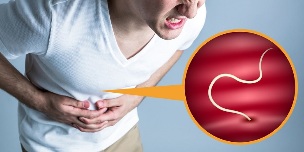
Classification of parasites
All parasites are divided into species. There are large groups by:
- method of infection;
- location method;
- biological features.
Each group has its own characteristics.
By localization type
Provide temporary, stationary and transit localization forms. In the first case, the parasite lives in the body of its owner only at a certain stage of development. In stationary form, pests are always present in the human body. The temporary form is the period of migration of the parasite to its habitat.
When treating, the doctor always takes into account not only the form of the parasite, but also its place of residence. Overall, pests are divided into 2 main categories. Parasites that live on the skin are called ectoparasites. The pests found in their owners are endoparasites.
Internal parasites are divided into 2 categories - tissue parasites and stomach organ parasites. There are also unusual shapes. In this case, the pests are in an unfamiliar place for them.
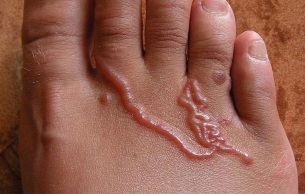
External parasites can be temporary or permanent. Those who consume blood through bites are temporary. They can cause infections. The rest of the parasites violate the integrity of the skin.
There are also intracellular pests. These include, for example, Plasmodium malaria.
By infection method
Parasites can also be classified according to the mode of infection. The following penetration methods are distinguished:
- Contact and household. In this case, the parasite penetrates as a result of violation of hygiene and hygiene standards.
- Fecal-oral. In this case, the infection occurs through dirty hands, as well as low quality products.
- Delivery track. Infection occurs through blood-sucking insects.
- Active routes. This is the name of the method of infection, in which the parasite reaches its owner at the larval stage.
Thanks to the many entrances, you can get parasites anywhere. Only preventative measures are possible to reduce the risk of infection.
According to biological features
According to biological features, parasites are divided into two categories - unicellular and multicellular. The first group includes sporozoa, ciliates, flagellate, amuba histology. The main method of infection is to ignore the rules of personal hygiene.
Worms, insects, arachnids are commonly referred to as multicellular parasites. The danger of infection, for example with worms, is that the worms damage the tissues and internal organs.
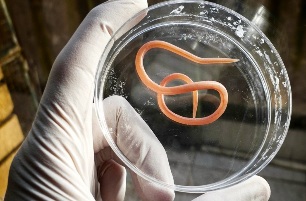
The most common multicellular parasite is the worm.
Multicellular parasites are more dangerous. They are distinguished by their rapid reproduction rate and complex life cycle.
Where parasites can be found
Some parasites can live in certain parts of the body, while others can spread throughout the body. It is difficult to diagnose parasitic infections.
Worms live mainly in the digestive tract. Infection occurs while eating unwashed food.
Parasites can be found under human skin. These representatives include rishta. Pests enter the body while drinking raw water. Tourists who go on holiday to countries where rishta is commonly infected.
Internal organs infect flux. They can live in the liver, pancreas, intestines, bile ducts. The main cause of infection is the consumption of raw fish.
There are also tissue microorganisms. They can live in the spinal cord, muscles and connective tissue. The main cause of infection is pets.
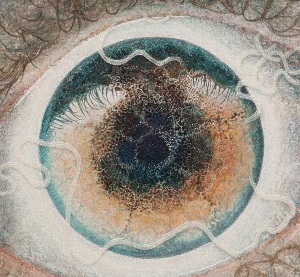
There are also eye parasites. They can be round, flat, ring-shaped, barbed-headed. The main cause of infection is poor heat treatment of fish or contact with infected animals.
Dangers of parasitic infections for humans
Any parasitic infection needs immediate treatment. The sooner treatment is started, the sooner the pest problem will be resolved and the fewer complications that will arise.
Parasites in the human body can cause serious pathology:
- Some pests cause the development of acute colitis. This condition worsens if the patient has an ulcer. There may be blood in the stool, which is dangerous for the development of anemia. Treatment should be started as soon as possible.
- Parasites can live in the brain or liver. This condition can be dangerous not only for health, but also for the life of the patient. If infected, there is a risk of getting a cyst.
- Pests that live in the gut can damage integrity. In addition, there is the risk of obstruction.
- Parasites infect the human immune system. Destruction of leukocytes and erythrocytes occurs. This directly affects a person's general well-being.
- Pests take nutrients from the human body. The risk of developing thyroid disease, anemia increases. In addition, the condition of the hairline and nail plate is deteriorating.
- The body is poisoned by toxic components. Waste from toxic parasites for humans. The more of them, the worse one's well-being. The risk of allergies, asthma, and asthma attacks increases.
Parasites are very dangerous for children. The infection turns into a large number of unpleasant symptoms. Children lose appetite, lose weight, apathy and fatigue appear. Your toddler may often cry and be restless. Dark circles appear under the eyes.
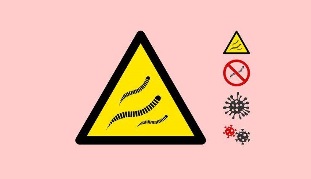
The baby is in the growing phase, so it is important for him to get enough nutrients. With parasites in the body, this is not possible. The baby's condition quickly deteriorates every day. The child may be delayed in his development.
The danger of parasites is that they can live in a person for months and years without making themselves feel. During this time, it will weaken significantly, will face a lack of nutrients. Possibility of complete fatigue. Only timely treatment can prevent it.
Contributing factors to infection
Often the person himself is to blame for the appearance of worms. There are a number of factors that increase the likelihood of pests. These include:
- refusal to wash hands before eating;
- infection with dirty shoes;
- ignore the signs of worms in pets;
- drinking raw water;
- eat unwashed fruits and vegetables;
- Low heat treatment of meat and fish;
- often eat out;
- weakness of the immune system after taking strong medications.
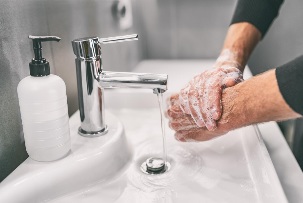
Parasitic eggs first enter the intestine. Afterwards, they are absorbed into the bloodstream and the larvae are carried throughout the body.
Parasites spread rapidly in large groups of children. This is because they ignore the rules of hygiene and relationships that are too close.
Symptoms of parasitic appearance in the human body
It is important to note that sometimes parasites do not appear at all for long periods of time. Symptoms are often general and almost invisible at first.
The first symptoms of parasites in the body are rapid and absurd weight loss, as well as the appearance of an itchy sensation in the anus. It is possible to confirm the presence of a parasitic infection only through diagnosis. Symptoms of infection often include various disorders of the nervous system and general weakness in the body.
Someone with a parasite suffers from a vitamin deficiency. This contributes to the appearance of fatigue, severe drowsiness and persistent apathy.
If pests live in the gut, then problems with the digestive system are inevitable. Diarrhea can be replaced with constipation. There is an increased risk of gas formation and pain in the right hypochondrium.

If there are parasites, a person's protective function will be reduced. Due to weakened immunity, there is a risk of various infectious diseases.
One of the most obvious signs of parasites is the spontaneous appearance of allergy symptoms. Also, allergic rhinitis or persistent tuberculosis can start to interfere.
Diagnostic helminthiasis
Only after the diagnosis and confirmation of the presence of worms, one can continue his treatment. To make sure that the parasite is present, doctors use different diagnostic methods:
- Macroscopic. For him, patient stools were taken for analysis. Microscopes or magnifiers are used as auxiliary equipment. This method is used to find pinworms or ascaris.
- Microscopic. For this, a thick smear is taken, which is then examined on a special membrane.
- Immunology. In this case, antibodies to certain types of helminths are sought in the blood. This method is used to find large numbers of different parasites.
- Biopsy. The presence of worms is determined by examining the muscle tissue.
- Instrumental. Such a method is used to determine how many internal organs and tissues are damaged by parasites. These methods include ultrasound, X-rays, computed tomography.
Treatment of parasitic attacks
To get rid of parasites, you can choose medicinal methods and folk methods. It is better to combine them. In this case, the effectiveness of the therapy will be very significant and fast.
Treatment is chosen individually. The most effective therapy is chosen by the doctor, taking into account all the features present in a particular patient.
Folk remedies for parasites in the human body
Traditional treatment methods are no less effective than medicine. Their main advantage is complete safety for patients.
One of the best remedies is garlic juice. It contains phytonutrients. They are the ones who destroy the pests in the body. Juice is taken three times a day. Start with 5 drops a day. The dose is gradually increased.
Another effective remedy is wormwood tincture. Like garlic, it contains phytonutrients. To prepare the medicine, 1 tablespoon of wormwood is mixed with 100 ml of alcohol. The drug is pressed for a week in a dark place. Take 20 drops 3 times a day. Tincture is applied 20 minutes before meals.
It is good to include a lot of carrots in your diet and drink the juice. It has adverse effects on parasites. It is recommended to take 1 glass of fresh carrot juice 30 minutes before eating.
Herbal decoctions have a good effect on the body. To prepare the remedy for parasites, mix 1 tablespoon each. tansy, wormwood, aspen bark. All components are poured into a glass of water and boiled. Take after cooling. Drink the broth 3 times a day, 125 ml before meals.
The main disadvantage of traditional therapy is that some medications can cause allergic reactions if there is intolerance to certain components. In this case, you should reconsider your therapy and look for a decoction or tincture that does not include allergens in its composition.

There is also an opinion that to combat a small number of parasites, it is enough to reconsider your diet. In the menu, you need to enter:
- pumpkin seeds;
- raw fruits and vegetables;
- coconut and pineapple;
- chile;
- garlic;
- various vegetable oils.
All these products have a negative effect on parasitic activity.
Remedy for parasites
Medicine is more effective. The main thing is to deliberately take all medications. It is important to know that they are strong, therefore their use is possible only after consulting a doctor in advance.
Taking self-medication with worm medicine is strictly prohibited. There is a risk that the patient will only worsen his or her own health condition by using the wrong medication needed in a particular case.
Prevention of parasites in the human body
It is easier to prevent the emergence of parasitic microorganisms than to fight it in the future. Everyone must comply with the existing safety measures. For this it is recommended:
- use only purified water to wash food and drink;
- not to use other people's personal hygiene items;
- give drugs to fight parasites to animals for prophylaxis;
- stop eating dirty fruits and vegetables;
- stop eating raw fish.
Diagnostics are required periodically to ensure that there are no harmful microorganisms. If precautions are taken, the risk of infection is minimal. It is very important to make sure that the children obey the recommendations. They are the ones in the main risk group.




























